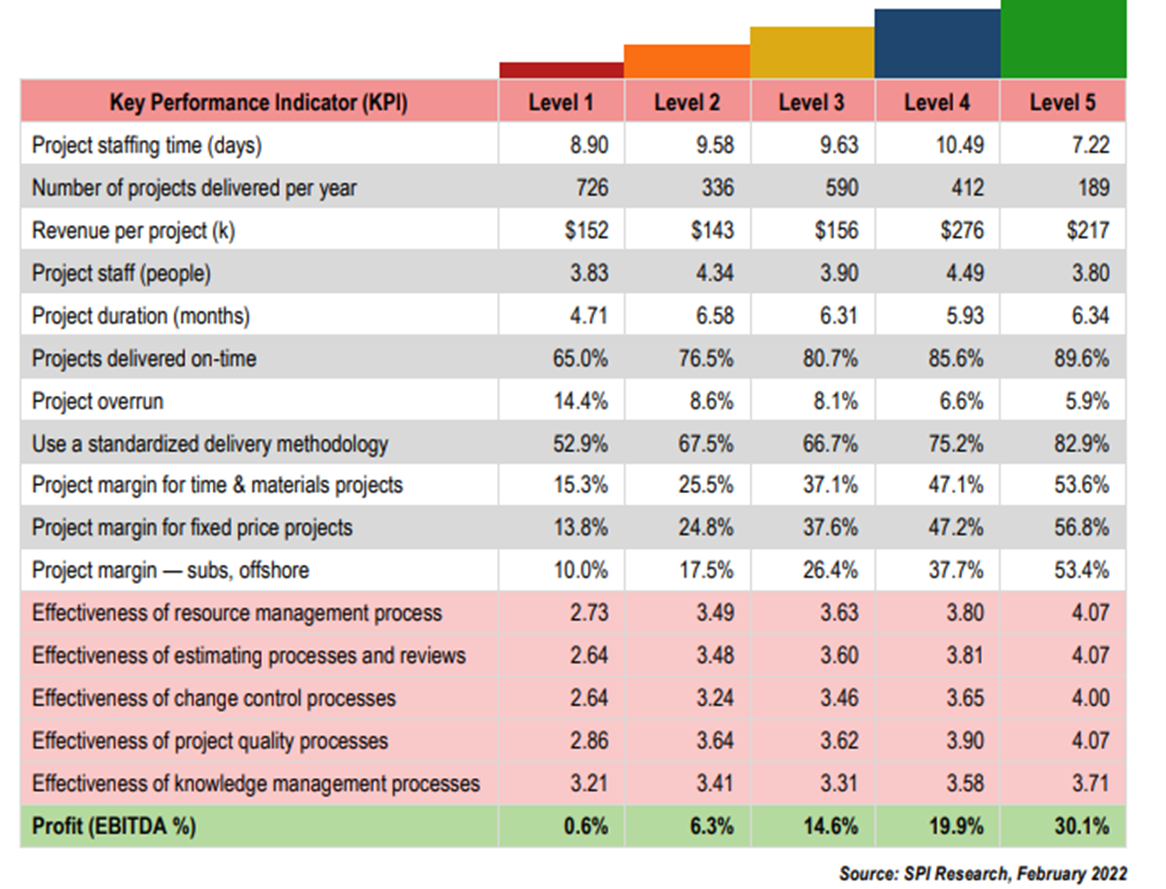
Client relationships and service execution drive performance for service businesses
Service Performance Insight (SPI) have been publishing their Professional Services Maturity Benchmark for the past 15 years. Following on from the disruption of 2020, this year’s report provides a crucial strategic snapshot of an industry returning to growth. And the challenges it faces ahead as a great majority of workers in the sector work remotely and enjoy more power than ever over where they work, how they work, and how they’re compensated.
Firms that sell the time of experts face several unique challenges even in less disruptive times. Perhaps more than any other industry, their survival is dependent on the establishment of relationships built on good client chemistry and long-term satisfaction. Moreover, the intangibility of the services they offer means that differentiation is based just as much on the way in which these services are packed, sold, and executed as the type of service offered.
In this post, we’ll be looking at SPI’s findings – which show that maturity against both client relationship building and service execution have a direct correlation with performance against a number of KPIs.
The impact of client relationships
It’s often been said that service businesses are dependent on relationships. This year’s Maturity Benchmark survey makes an attempt to quantify the exact extent to which this is true.
1. High performing firms focus on maintaining fewer clients, but generate much higher revenue per client.
This not only indicates a greater level of brand differentiation and focus, but also indicates both a greater ability to generate profit from projects and a deeper and more valuable level of client relationship.
2. Despite maintaining fewer clients overall, high performing firms generate more new-logo client revenue than average.
High performers generated an average of 31.3% of their total revenue from new logo clients – indicating they’re better equipped to both seek out the clients and project that are a good strategic fit, win their business and establish more profitable relationships.
3. High performing firms have much more productive sales teams.
This is in large part due to the fact that the clients of high performing firms are much more likely to provide them with references – firms with over 90% referenceable clients have a win-to-bid ratio 38% higher than those with less than 50% referenceable clients. (The top performers also have a 7% higher NPS on average.) Quite simply, the better your relationships with clients, the more likely they are to go to bat for you when you bid for new logos. That means maintaining a bigger pipeline and winning more bids – both vital components of service business success.
According to the report, many firms have begun to take the importance of references seriously and are implementing dedicated customer success programs to ensure their clients are happy with their work (and to fix it when they aren’t.)
Service execution – the lifeblood of your business
The report cites that the most notable differences between high- and low-performing firms to deliver projects on time and minimize project overruns. These critical KPIs are also closely correlated with client satisfaction, employee satisfaction, and overall profitability. (After all, nobody wants to work with a partner that lets them down, nobody wants to work on projects that are already going poorly, and cost and time overruns have an obvious effect on how much money the business makes.)
The report also has this to say about how service execution acts as a measure of success in a year when service execution standards rose significantly:
1. The alignment of sales, service, and finance is critical for success.
All project-related information (time, expense, project details and knowledge) must be captured to be invoiced and to improve the next service delivered. In an increasingly competitive consulting marketplace, success most often comes down to operational excellence – with visibility and management controls in place to ensure effective resource and project management. Done right, gross project margins of more than 60% are possible. Done wrong, project yields can drop to single digits, or go negative.
2. Firms at the highest level of maturity outperform competitors against all major KPIs

The differences in performance between the highest and lowest level here speak for themselves. The most “mature” companies here (level 4 and 5) take advantage of integrated solutions that enable continual checks and balances to optimize utilization and bill rates, allow total visibility into global project quality, and allow for multi-disciplinary resource management.
3. Project staffing time is the key indicator for resource management and service execution quality
The best service execution metrics were reported for the organizations who can staff the fastest as they do the best job of taking advantage of standardized delivery methods resulting in the best on time project delivery with the least project overruns.
Want to learn more?
For more information on client relationship and service execution performance, check out our interactive eBook which summarizes the report’s most important findings and provides you with actionable first steps for boosting your performance here.
To discover more about how your firm measures up against the best in its field – and learn how leveraging modern operational technologies like cloud ERP and PSA solutions can help your firm compete with them on an equal footing – check out SPI’s full Professional Services Maturity Benchmark Report here.





